



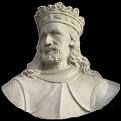













A Quick History of the Monarchs of Spain |
By T.L. Winslow (TLW), the Historyscoper™ |
© Copyright by T.L. Winslow. All Rights Reserved. |
Last Update: Sept. 19, 2018. |









Westerners are not only known as history ignoramuses, but double dumbass history ignoramuses when it comes to the Spanish monarchs. Since I'm the one-and-only Historyscoper (tm), let me quickly bring you up to speed before you dive into my Historyscopes.
Spain has always been part of the Wild West of Europe, so isolated that its monarchs got too inbred and regularly went mad. Of course that was centuries after the Muslim invasion of 711, when they began dosing on Arab and African blood, developing that proud cruel black-eyed black-haired line of models that ended in Zorro.
According to Bible-thumpers, the first inhabitants of Spain were descendants of Noah's son Japheth, who lived in SW Europe and Spain, which the Bible calls Tarshish - the original Tarship Enterprise?
In the 6th cent. the Carthaginians give Spain its name, from "Spania", meaning "land of rabbits" - the habits in the land of rabbits fall mainly on the laps of abbots?
In 507 Arian Visigoth King Alaric II, jealous of Athanasian Frankish King Clovis I meets with him on a small island in the Loire near Amboise to settle their boundary, and they separate with kisses and hugs, then get on with the real business of fox and hare; Clovis holds an assembly of his princes at his capital in Paris, where he gives a speech, saying, "It grieves me to see that the Arians still possess the fairest portion of Gaul. Let us march against them with the aid of God, and having vanquished the heretics, we will possess and divide their fertile provinces", causing his hearers to vow not to shave their beards till they kick Visigoth butt; after his wife Clothilde suggests that he build a church to give some mojo to the expedition, he tosses his Francisca (battle axe), and orders the Church of the Holy Apostles (later the Abbey of St. Genevieve) built where it lands, making him the new Joshua and Gideon put together to his fans?; Ostrogoth king Theodoric of Italy tries to mediate, then sends troops to aid his rash Arian Visigoth kinsman Alaric II, whose troops, which incl. armed slaves outnumber those of up-and-comer Clovis I and his Franks, but are soft from a long period of peace, while the Franks are supported by the orthodox Gallo-Roman pop. and clergy, who are whipped up by exiled bishop of Rodez (since 506) (St.) Quintianus (Quinctianus) (-525), and after Clovis I visits the Shrine of St. Martin and gets a favorable omen from a Psalm being read mentioning the champions of heaven, and being led to the White Hart Ford over the Loire 40 mi. from Poitiers by a white hart (locals?), and receiving yet another divine omen in a flaming meteor suspended over the Cathedral of Poitiers, the Franks surprise and defeat the Visigoths at the Battle of Vouille (Vouillé) (10 mi. from Poitiers), and King David, er, Sampson, er, Clovis kills Alaric in single combat, then fights off two mad Goths trying to avenge him?; the victorious Franks capture Aquitania and turn it into the semiautonomous Duchy of Aquitaine (ends 768), then take Angouleme after the walls supposedly fall to the ground like Jericho in the Bible, and take control of SW Gaul, then siege Arles before the Ostrogoths finally arrive and rescue their Visigoth brothers with the loss of 30K German Franks and Burgundian allies, causing Clovis to sign a peace treaty, allowing the Visigoths to permanently withdraw over the Pyrenees, retaining only Septimania (a narrow coastal area in W Gallia Narbonensis from the Rhone River to the Pyrenees); Byzantine emperor Anastasius grants Clovis an honorary (pro) consulship, legitimizing his Roman Catholic rulership of France, and causing him to stage a big coronation at the Church of St. Martin complete with the diadem and purple, and call himself Augustus, later causing some to claim that the French monarchy is of Roman origin; Theodoric becomes regent of Alaric II's son Amalaric (until 526), making him king of the united splendid-noble Ostro-Visigoths; too bad, the blonde-blue Norse-German Arian Visigoths are a small minority of the pop. in Spain, and are rapidly Romanized, converted to Roman Catholicism, contained, isolated, and finally crushed and absorbed by the invading Muslims by 713.

In Jan. 587 new (since 586) Spanish Visigoth king Reccared (Recared) I (559-601) is converted to Roman Catholic orthodoxy by Bishop Leander of Seville, and officially renounces Arianism, causing most nobles and ecclesiastics to follow suit, merging with the majority of Hispano-Romans in Spain; it takes 111 years, but the pope gets his way and de-Arianizes the pesky Spanish Visigoths.
In June 638 the Sixth (6th) Council of Toledo outlaws non-Roman Catholics in the Visigoth kingdom of Spain, causing many forced conversions, many of them fake, esp. Jews - giving them a reason to not get mad but get even?

On Apr. 30, 642 after Tulga is overthrown by 79-y.-o. warlord Chindasuinth (Chindaswinth) (563-653) (cmdr. of the Basque frontier known for putting down pesky holdout Arians), he is elected king by a convention in Pampalica (modern-day Pampliega), and becomes king of Visigoth Spain, stopping any possible revolt by executing 200 noble and 500 petty noble Goths and banishing and confiscating property from a bunch of others without a trial; during his reign Muslims first begin ravaging the coast of Andalusia; with the assistance of Zaragoza bishop (St.) Braulio (Braulius) of Zaragoza (590-651) he draws up the Roman-like Liber Ludiciorum law code that supersedes the Breviary of Alaric used by the Hispano-Roman pop. and the Code of Leovigild used by the Gothic pop.; his son Recceswinth finishes it in 654.

On Jan. 20, 648 tough but old king Chindasuinth has his son (by wife Recciberga) Recceswinth (Reccesuinth) (-672) crowned co-king in an attempt to make the monarchy hereditary again, and he becomes the real ruler while his old fart daddy rummages for the cole slaw and founds the Monastery of San Roman de la Hornija near Toro by the Douro River for his bones to rest in, then dies in 653, a typical Christian hypocrite, "impious, unjust and immoral" (Bishop Eugene II of Toledo); during Recceswinth's reign the bishops take over the govt. and dominate the nobles, setting themselves up to pick the king and hold him to their policies.

In 672 Reccesuinth dies, and his son Wamba (Gothic "big belly") (643-87) becomes Visigoth king of Spain (until 680), immediately facing a revolt by Count Hilderic of Nimes, gov. of Nimes, who is supported by Bishop Gunhild of Maguelonne and the Spanish Jewish pop., causing Wamba to send a force under Hispano-Roman duke Flavius Paulus, who arrives in Narbonne, then flops and converts to Judaism and proclaims himself king, with Hilderic backing him, going on to send emissaries to the Basques to join up, pissing-off Wamba, who personally leads his army to the W Pyrenees and kicks Basque butt; meanwhile Flavius Paulus is crowned with a golden crown given by late king Retarded, er, Reccared to the Church of Gerona, causing the Visigoth cities in Gaul and most of NE Spain to join his side, while Jewish hit men begin assassinating nobles loyal to Wamba, who regroups, marches into Narbonensis and Tarraconensis, and wins back most of the rebel cities.
In 680 after he tries to reform the military and triggers a civil war, and is poisoned in Pampliega (near Burgos) under the orders of Ervig (Erwig) (Ervigio) (Euric) (643-87) (son of Ardabast from Constantinople and Chindasuinth's niece) (why does his name make me think of an earwig?), sick Wamba retires to a monastic habit and appoints Ervig his successor, and he is crowned as king of Visigoth Spain in Toledo on Oct. 31 (until 687), rewarding his co-conspirator Julian of Toledo (642-90) with the job of bishop of Toledo, who covers it all up in his Historia Wambae Regis (History of King Wamba); when the public doesn't buy the coverup, Ervig goes on to become a complete puppet of the bishops and nobles, giving them the keys to the cash register while his kingdom goes into decline and near civil war, and the pop. becomes immoral, setting it up for plucking like a ripe apple by the Muslims in 711?

On Nov. 14, 687 after growing gravely ill (deja vu?), Ervig proclaims his son-in-law (husband of his daughter Cixilo) Egica (Egicca) (Ergica) (610-702) (an Aryan?) as king of Visigoth Spain (until 702), and retires to a monastery then kicks off to be with Christ; Egica goes on to be a mean king, punishing homosexuals with castration, prohibiting Jews from conducting business with Christians, passing laws treating fugitive slaves harshly, and upstaging Draco by amending a law requiring anybody accused of theft of goods worth 300 solidi or more to be tried via the caldaria (boiling alive in water) to anybody accused of theft however small (even a cabbage?) to get the govt.-provided parboiling.
Late in 702 mean king Egica (b. 610) dies in his sleep, and his son (by Cixilo, daughter of King Erwig) Wittiza (Witiza) (Witiges) (686-710) (co-ruler since 694, and anointed when he reached 14 on Nov. 15/24, 700) becomes king of crumbling Visigoth Spain (until 710), starting out good by reversing some of daddy's exile and confiscation of nobles, causing the people to love him, then go bad and "indulge in a plurality of wives and concubines, encouraging his subjects to do the same", while recalling from exile and surrounding himself with Jewish advisers, who (obviously in league with fellow Jews of N Africa, to make the coming invasion a cakewalk?) successfully counsel him to break down the defenses of cities, demolish castlem, and turn spears into harrows in order to stop potential traitors, causing the clergy to hate him; he executes Duke Favila of Cantabria (son of Chinasuinth and father of Don Pelayo) and blinds and imprisons Duke Theodofred the Visigoth of Cordoba (b. 645), but Duke Favila's son Don Pelayo and Duke Theodofred's son Duke Roderic of Baetica escape to Italy to plan revenge.
In 710 after "tumultuously invading the kingdom with the encouragement of the Senate" with an army from Italy, exiled Roderic (Ruderic) (Roderick) (Roderik) (Ruderigus) (-711) defeats and captures Wittiza "the Wicked", then blinds and imprisons him in Cordoba, and is crowned the last king of Visigoth Spain by next year after usurping the throne from Wittiza's two sons Evan and Siseburto (who escape to Tangier); he then splits the kingdom with (Wittiza's 3rd son?) Achila (Aquila) (Agila) (Akhila) II (-714), with the SW (Lusitania and W Carthaginiensis incl. Toledo and Egitania, AKA Idanha-a-Velha) going to Roderic, and the NE (Tarraconensis and Narbonensis) to Achila II (nobody gets Gallaecia and Baetica?), which gives the Muslims their big opening; meanwhile Wittiza's family flees to Ceuta on the N shore of the Maghreb, allying with Jews and Arian Christians who hate the Roman Catholic bishops of the Visigoth monarchy.
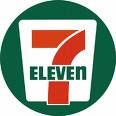


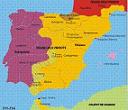


On Apr. 29, 711 after Visigoth Count Julian (Ilyan) betrays his post at Ceuta into the hands of the Muslims and flops to their side to get even with Visigoth king Roderic for dishonoring (knocking up?) his daughter Lady Florinda, and sends four boats for them, a recon army of 1.7K Muslim Moors (mainly Berbers and slaves, plus a few Arabs) under lame Berber Muslim Umayyad Gen. Tariq (Tarik) ibn Ziyad (Zeyad) ibn Abdillah (-720) (AKA Tariq the One-Eyed) (of the Berber Nefzaoua tribe?) (a native of Hamdan, Persia?) (who was a slave of North African gov. Musa ibn Nusayr before being freed) (known for a prominent forehead and a black hairy mole on his left shoulder?) cross the Strait of Gibraltar (Jabal al-Tariq) (Gabel al-Tariq) (mountain of Tariq) from Mauretania on a Sat. in the Muslim month of Shaban and Muslim year 92 (24th of Rejeb, June 19?), and invade Spain (al-Andalus), sending the boats back and forth several times until their entire army of 7K is over, then burning them so it's do or die; he obtains help from the Jewish community of Elvira (Ilbira) ("white", "trustworthy", "alert") in a suburb of Granada; after Visigoth king Roderic spots them and swears an oath to throw them back into the sea and begins approaching, Tariq gives his Famous Do-or-Die Speech, featuring the immortal soundbyte: "Remember that if you suffer a few moments in patience, you will afterward enjoy supreme delight", after which the pumped-up Allah Akbars charge the Spanish army, causing them to flee?; they then march to Cartagena and Cordoba before being driven back and regrouping and receiving reinforcements; on July 19 (Sun.) (two days before the end of Ramadan) King Roderic, who has holed-up in his castle in Cordoba and sent men to gather an army of 100K blonde Goths (mostly serfs?) attacks the puny 10K-to-18K man Muslim army (incl. Arabs and Syrians, but mostly kinky-haired blacks?) at the Battle of Guadalete (Rio Barbute) on the Jerez (Xeres) de la Frontera in SW Spain NE of Cadiz (later home of the fortified wine sherry), and is defeated after eight days after Wittiza's sons Evan and Siseburto make a deal and flop over to the Muslim side in exchange for keeping their "royal portion" of 3K farms, and Tariq personally kills Roderic, who is mounted on a litter between two mules with a jewel-encrusted silk awning (either that or he drowns in the river, as his body is never found, just his white horse), after which his relatives Sisbert and Osbert flee, causing the confused Visigoth army to flee in all directions, most N to Ecija near Seville; Cadiz remains in Muslim hands until 1264; the Muslims then take Toledo, and execute the nobles of the city for assisting in the flight of Egica's son Oppa (Oppas), who had been declared king, and flees to Seville, where he becomes bishop?; after the dead rich Goth princes are stripped of their bling, which is distributed among the 9K remaining Muslims, the news causes Muslims in N Africa to flock on over for the fun and games, after which they begin to outnumber the quaking Goths; meanwhile Achila succeeds as the positively last king of the Spanish Visigoths (until 714) (although he probably was already a rival co-king to Roderic), holding on in Zaragoza, Tarragona, and Gerona, plus the province of Narbonne (Narbonensis) (Septimania) in SE France, the last safe base on the far side of the Truth Booth (Pyrenees), which (too bad?) has a large Jewish pop.

In 718 the Roman Catholic kingdom of Asturias (Asturia) in NW Spain S of the Bay of Biscay with capital at Cangas de Onis is founded in the inaccessible Pyrenees by Visigoths fleeing the Moors, led by former royal bodyguard (of Roderic) Pelayo (Pelagius) (681-737) (son of Count Favila of Cantabria), throwing the Moors back when they reach it next year.
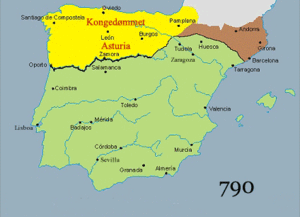
In summer 722 the Battle of Covadonga sees 300 Christian soldiers of Asturias under Pelayo score their first V in Spain against the Moors since the 711 invasion after the Muslims who got their butts kicked last year in France under Anbasa ibn Suhaym al-Kalbi make the mistake of trying to save their reps by assisting N Iberian gov. (since 720) Munuza and fellow Berber Al-Kama in taking on the pesky rebel Christian stronghold of Asturias called Covadonga (protected by a narrow valley), and used traitor Bishop Oppas of Seville (son of Egica) to try and talk them into surrendering, which just pissed them off, after which the Muslims tried a frontal attack and were ambushed by some of Pelayo's men hidden in a cave, after which they tried to leave Asturias and were greeted by the pissed-off Christian pop., who emerged from their villages with hidden weapons and killed hundreds of Allah Akbars. Munuza (who kidnapped and married Pelayo's sister Ormesinda, who poisoned herself on her wedding day, pissing Pelayo off more) fled, and was killed personally by Pelayo in Proaza, Trubia or La Felguera, after which the stragglers reported back that Pelayo only had "thirty infidels left, what can they do", but never tried attacking them again. This V was later taken to mark the start of the Spanish Christian Reconquista (reconquest of Spain) by 12th cent. Christian propagandists. One of the first reconquered cities was the seaport of Gijon (Gijón) (ancient Roman town of Gigia or Gijia) on the Bay of Biscay (20 mi. NE of Oviedo), way later figuring big in the Siege of Gijon in the Spanish Civil War on July 19-Aug. 16, 1936. Meanwhile the madass Arabs sans Tariq bypassed them and decided to cross the Pyrenees. Did you figure out yet that modern-day Muslims who act outraged at horrible Zionist Jews who want to reclaim little ole Israel because they were there first and their god Jehovah promised it to them, are descendants of Muslims whose god Allah promised the entire Earth to them, all they had to do was go out and kill, fuck, and brainwash their way as they went, and play dumb afterwards, no need for history lessons, we got it, you take it and we'll declare jihad again?

In 737 Pelagius of Asturias (b. 681) dies, and is succeeded by Alfonso (OG "ready for battle") I (the Catholic) (693-757), who assigns generous shares of lands conquered from the Muslims to the Church, and uses the clergy as a counterweight to the aristocracy.
In 797 after gov. Zeid of Barcelona rebels against Cordoba and fails, he hands Barcelona to Louis I the Pious of the Franks (until 799), who creates Visigoth nobleman Borrell (-820) as count #1 of Cerdanya, Urgell, and Osona on the iffy N border of Cordoba.

In 824 Basque noble Inigo I Iniguez (Íñigo I Íñiguez) (Arista) (Aritza) (Aiza) (Basque "the oak", "resilient") (Basque "Eneko" = my little love) (781-852) is elected as Christian king #1 of Pamplona (Navarre) on the S slopes of the W Pyrenees (until 852) in Spain, allying with the Muslims inside his kingdom against outside enemies; his descendents are referred to as demons in the 11th-12th cent. Song of Roland, which calls Charlemagne's horse Tencendur (Tencendor) (Lat. "strife").

In 842 king (since 783) Alfonso II (b. 760) dies without an heir, and while designated successor Ramiro I (son of Bermudo I) is away in Vardulius marrying his 2nd wife Paterna, the impatient nobles elect his son-in-law Visigothic count Nepocian (Nepotian) of Asturias as king, pissing-off Ramiro I and causing him to raise an army in Galicia and defeat him at the Battle of the Bridge of Cornellana by the Narcea River, chasing down the fleeing whimp and blinding and putting him in a monastery, after which Ramiro I (790-850) becomes king of Asturias (until 850), eliminating the system of election of a king by nobles that caused the problem, giving up the S push against Cordoba and spending his reign dealing with pesky Moors and Vikings.


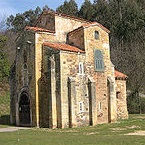
On Feb. 1, 850 king (since 842) Ramiro I (b. 790) dies after leaving a court of great splendor with its own unique Asturian architecture that prefigures Romanesque architecture, along with the Church of Santa Maria del Naranco on the S side of Mount Naranco 2 mi. from Oviedo, and the nearby Church of San Miguel de Lillo, and his son Ordono (Ordoño) I (821-66) becomes king of Asturias in NW Spain (until May 27, 866), becoming the first to ascend hereditarily without an election by the nobles; he starts out by quashing a rebellion of the Basques, who are supported by Muslim gov. (banu qasi) Musa ibn Musa of Zaragoza, then stops an intended Moorish assault on Vardulas on the Ebro River.

On May 27, 866 Ordono I (b. 831) dies, and his son Alfonso III (the Great) (848-910) becomes king of Asturias (until 910), going on to consolidate his kingdom at the expense of the weakening Muslim Umayyad princedom of Cordoba in al-Andalus, and ordering three chronicles written that claim that his kingdom is the rightful successor to the old Visigoth kingdom of Spain; his kingdom begins to be called Galicia or Oviedo instead of Asturias.
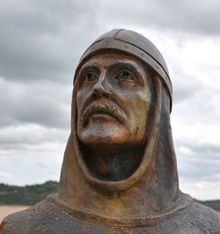
In 905 after a coup sponsored by Count Galindo Aznarez II of Aragon desposes his father Garcia Jimenez, Sancho Garces (Garcés) I (860-925) (nephew of the Count of Ribagorza) becomes king of the Kingdom of Pamplona on both sides of the W Pyrenees on the S end of the Bay of Biscay in Spain (between Asturias on the W and Gascony on the E) (until 925), ending the line of Inigo I Iniguez Arista (founded 824); the capital and main city is Pamplona (Iruña) in the Basin of Pamplona linking the Pyrenees Mts. with the Ebro River Valley; the county of Navarre in NC Spain becomes a kingdom after Sancho Garces I proclaims himself king and ends his alliance with the Emirate of Cordoba, going on to expand S along the Ega River to the Ebro River incl. Najera and Calahorra, shrinking the domains of the Banu Qasi family.
In 909 Alfonso III the Great of Spain moves his seat of govt. to Ociedo, but only lasts a year after surving a conspiracy by his sons Garcia, Ordono, Gonzalo, Fruela, and Ramiro backed by Garcia's father-in-law that causes him to briefly flee to Boiges.


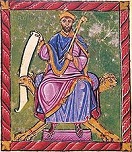
On Dec. 20, 910 king (since May 27, 866) Alfonso III the Great (b. 848) dies in Zamora after building the Church of Santo Adriano de Tunon (Tuñón) in Tunon, Asturias on Jan. 24, 891), and his kingdom is divided among his three sons by Jimena of Pamplona, with eldest son (by Jimena of Pamplona) Garcia I (871-914) becoming king of the new macho-sounding Kingdom of Leon (León) (Sp. "lion"), 2nd son Ordono (Ordoño) II (873-924) becoming king of the new Kingdom of Galicia (modern-day Portugal) (until 924) (also Leon after Garcia I dies in 914), and youngest son Fruela (Froila) II of Asturias (875-925) becoming king of tried-true Asturias based in Oviedo (until 925), which is still considered to have primacy, taking on the job of consolidating the region later called Castile and keeping its counts in check.
In 924 king (since 910) Ordono II (b. 873) dies, and his eldest surviving brother Fruela II of Asturias (-925) becomes king of Leon (until July 925), assassinating Gebuldo and Aresindo (sons of Olmundo who claim descent from Wittiza) and exiling Olmundo's son Bishop Frunimio of Leon, alienating the nobility.
In 924 Abd-ar-Rahman III sacks the capital of Sancho I of Pamplona, going on to push Ramiro II of Leon back to Burgos by 934.
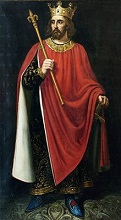
In July 925 king (since 910) Fruela II (b. 875) dies of leprosy, and his son Alfonso Froilaz (the Hunchback) (-926) succeeds, but the sons of Ordono II (Sancho Ordonez, Alfonso IV, and Ramiro II) make a comeback and depose him, and he flees to become king of Galicia (Portugal) (until 926), while they split the rest up, with Alfonso IV (the Monk) (890-933) becoming king of Leon and Asturias (until 931), and Sancho Ordonez (895-929) taking Froilaz down and becoming king of Galicia next year (until 929).
On Dec. 11, 925 Sancho Garces I (b. 860) dies, and since his 6-y.-o. son Garcia Sanchez I (b. 919) is too young, his brother Jimeno II Garces (-931) becomes king of Pamplona (until 931).

In 931 king (since 925) Alfonso IV the Monk abdicates and enters a monastery, and his brother (son of Ordono II) Ramiro II (900-51) becomes king of Leon, Asturias, and Galicia (until Jan. 1, 951); too bad, next year Alfonso changes his mind and tries a coup, and is defeated, blinded and sent back to his cloister in Sahugun, where he dies in 933.
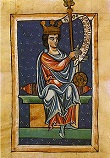
On Jan. 1, 951 king (since 931) Ramiro II (b. 900) dies, and his son Ordono (Ordoño) III (925-56) becomes king of Leon (until 956), dealing with the claims of his half-brother Sancho the Fat of Castile (who is backed by Navarre and Castile), followed by an internal rebellion in Galicia, plus attacks from the Muslims of Al-Andalus, which end after raiding as far as Lisbon in 955 and capturing a load of booty, causing Abd-ar-Rahman III to decide to concentrate on the Fatimids of N Africa and signs a peace with him before launching an expedition against Tunis.
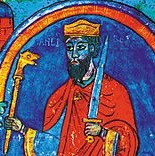
In 956 king (since 951) Ordono III (b. 925) dies, and his morbidly obese half-brother (son of Ramiro II) Sancho (Sp. "sacred") I (the Fat) (933-66) becomes king of Leon, only to be deposed in 958 by a group of nobles led by Fernan Gonzalez of Castile for being too obese, sending him into exile in Andalus, where he goes on a weight loss program under treatment by Hasdai ibn Shaprut while seeking help from his grandmother Toda to regain his throne, making a treaty with the Moors then taking Zamora in 959 with the help of nobles from Leon and Navarre, regaining his throne in 960, after which he reneges on his treaty with the Muslims and is raided several times, watching his Castilian and Galician nobles champ at the bit and go independent until he is finally poisoned in 966 - the original Sancho Panza or Sacred Belly?

On Dec. 19, 966 king (since 956) Sancho I the Fat (b. 932) is poisoned, and his 5-y.-o. son Ramiro III (961-85) becomes king of Leon (until 984), with mother Teresa Ansurez being put in a convent while his aunt Elvira Ramirez takes the title of queen-regent; after a peace treaty with caliph al-Hakam II expires, the Cordobans resume attacks on his realm; meanwhile when he reaches the age of majority and marries Sancha, daughter of Count Gomez of Saldana, he decides to become an absolutist monarch, pissing-off Galicia and Castile and causing them to fight for independence.
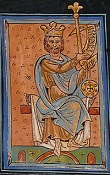
On Oct. 15, 982 after the nobles of Galicia rebel against weak tyrant Ramiro III of Leon and proclaim Ordono III's son Bermudo (Vermudo) II the Gouty (953-99) as king of Galicia (which later becomes Portugal) he is crowned in the Cathedral of Santiago de Compostela (until 999).

In Sept. 999 king (since 982) Bermudo II the Gouty (b. 953), who has been forced to travel by litter all year dies in Villanueva del Bierzo, "the poor king tormented in life by the sword of Almanzor and in death by the vengeful pen of a bishop" (Perez de Urbel); his 5-y.-o. son Alfonso V (the Noble) (994-1028) becomes king of Leon and Galicia (until Aug. 7, 1028), with his mother Elvira Garcia of Castile and Count Menendo Gonzales (Mendo Goncalves) (965-1008) as regents (until 1007).

On Aug. 7, 1028 king (since 999) Alfonso V the Noble (b. 994) is killed by an arrow while sieging the Muslim-held town of Viseu in N Portugal, and his son Bermudo (Vermudo) III (1010-37) becomes king of Leon (until Sept. 4, 1037), becoming the last king of the Perez Dynasty founded by Peter of Cantabria; in 1025 he is called emperor in Galicia.

In 1029 Count Garcia Sanchez of Castile is murdered by some exiled Castilian nobleman as he tries to enter the Church of St. John the Baptist in the city of Leon to marry Sancha of Leon, sister of Bermudo III of Leon, causing Sancho III of Navarre to claim the county of Castile in his wife's forgettable name and install their son Ferdinand I (the Great) (1017-65) as the new count of Castile (until Dec. 24, 1065), then force Sancha to marry Ferdinand in 1032, with Castile as her dowry; daddy Sancho then acts as overlord with the goal of permanently uniting Castile and Leon under the dynasty of Navarre, starting by seizing the borderlands between the Cea and Pisuerga Rivers N of the city of Leon.
On Sept. 4, 1037 the Battle of Tamaron (Tamarón) sees king (since 1028) Bermudo III of Leon (b. 1017) defeated and KIA by his brother-in-law Ferdinand I the Great of Castile (falls off his horse onto the spears of his own infantry?), and since Bermudo dies without an heir, his kingdom of Leon recognizes Ferdinand as king by right of his wife (Bermudo III's sister) Sancha, and he is crowned as king of Leon and Castile in the city of Leon next June 22 (until 1072), uniting Castile and Leon under the dynasty of Navarre, and making it #1 in Christian N Spain; after overrunning Moorish-held N Galicia, he sets up a vassal as count.

On June 24, 1065 (Feast of St. John the Baptist) king (since 1037) Ferdinand I the Great (b. 1017) dies after falling dangerously ill and retiring, then dressing up as a monk and lying on an ash-covered bier in front of the altar of the Church of St. Isidore; his empire is divided between his three sons, with his provocative title of emperor of Spain retired, along with the title of count of Castile: eldest son Sancho II the Strong (1036-72) becomes king of Castile, middle son Alfonso VI the Brave (1037-1109) becomes king of Leon, and youngest son Garcia II (1042-90) becomes king of Garcia, er, Galicia (Portugal); he also gives the city of Toro to his daughter Elvira, and the city of Urraca to his other daughter Zamora; too bad, Sancho II wants it all, and the War of the Three Sanchos (Castile vs. Aragon and Navarre) (ends 1067) when Aragon severely mauls the Castilians at the Battle of Viana; the status quo is restored after the Zaragozan Vali of Huesca invades Aragon from the S.
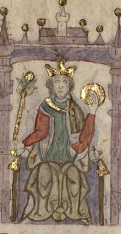
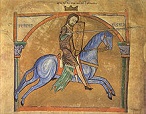
On Aug. 21, 1157 king (since 1126) Alfonso VII of Castile and Leon (b. 1105) dies, leaving Castile to his desired son Sancho III (the Desired) (1134-58) (until Aug. 31, 1158), and Leon to his son Ferdinand II (1137-88) (until Jan. 22, 1188); Sancho III goes on to found the Order of Calatrava, the first military order in Castile, which is confirmed via a bull by Pope Alexander III on Sept. 26, 1164; Ferdinand II goes on in 1170 to found the Order of Santiago de Compostela to protect the city of Caceres.

On Aug. 31, 1158 king (since Aug. 21, 1157) Sancho III (b. 1134) dies, and his son Alfonso VIII (the Noble) (1155-1214) becomes king of Castile and Toledo (until Oct. 5, 1214), going on to take on the Almohads and break their back in the 1212 Battle of las Navas de Tolosa.
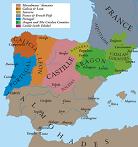
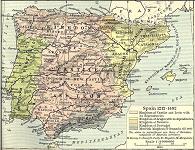

On July 16, 1212 after 500 years of fighting back inch by inch, step by step, resulting in the Christian kingdoms of Portugal (W Spain), Castile (C Spain), Navarre (E of Castile in the Pyrenees), and Aragon (E of Castile to the coast), the Battle of Las Navas de Tolosa is a giant V for the Christians of Aragon, Castile, Navarre, and Portugal over the Almohad Muslims in Spain, with 100K Muslim vs. 2K Christian casualties, causing 1M panicked Muslims to flee back to N Africa, after which they run scared, losing Cordoba in 1236 and Seville in 1248, and by 1252 only the Nasrid Kingdom of Granada in the S (founded 1238) (the place where the pesky Jews of Elvira originally helped them invade) remained, along with some territory held by their rivals the Marinid Dynasty (1244-1465), who lost their last fortress in Spain in 1344, sharing N Africa with the Hafsid Dynasty, which rules Ifriqya (Tunisia) from 1229 to 1574, becoming pirates of Christian shipping and using Allah's loot to build up their arts and culture for Ben Kingsley. Granada survives by becoming a tributary state of Castile in 1238, supplying it with troops while becoming a trade hub with the Muslim world.
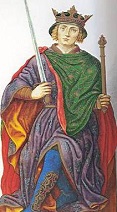
On Oct. 5, 1214 king (since Aug. 31, 1158) Alfonxo VIII dies, and his 10-y.-o. son (by Eleanor of England, daughter of Henry II of England and Eleanor of Aquitaine) Henry I (1204-17) becomes king of Castile and Toledo (until June 6, 1217), with his older sister Berengaria (the Great) of Castile (1179-1246) (wife of Alfonso IX of Leon) as regent.



On June 6, 1217 king (since Oct. 5, 1214) Henry I (b. 1204) is killed by a tile falling from a roof, and his sister Berengaria (the Great) of Castile (1179-1246) becomes queen of Castile and Toledo, renouncing the throne on Aug. 31 in favor of her son (by Alfonso IX of Leon) Ferdinand III (the Saint) (1199-1252) (until May 30, 1252), who becomes one of Castile's top kings, expanding the dominions of Castile in al-Andalus incl. Cordoba and Seville, and securing the permanent union of the crowns of Castile and Leon after becoming king of Leon and Balicia on Sept. 24, 1230.

Intellectually-cracked 13th cent. Europe gets one Bourbon, one Scotch, and one beer? On May 30, 1252 king (since Aug. 31, 1217) St. Ferdinand III (b. 1199) dies, and on June 1 his erudite son Alfonso X (the Wise) (El Sabio) (1221-84) becomes king of Castile and Leon (until Apr. 4, 1284), taking a clue about cautious multiculturalism from late great Frederick II of Germany and beginning a cultural awakening in intolerant backward Europe known as the Castilian Thirteenth (13th) Cent. Renaissance, creating the Spanish Nat. Library in Madrid, one of Europe's first state libraries, along with the Alfonsine School of Translators in Toledo, manned by Christians, Jews, and Muslims, incl. Hermannus Alemannus (Herman the German), who trans. a large mass of Arabic works mss. on astronomy, astrology, and history, selected by the king into Latin and Spanish, bringing the most important Greek, Indian, Persian, and Syrian works to the scholarly Euro community, and causing Toledo to become a European intellectual hub which fuels the Renaissance; Alfonso X the Wise supervises the ambitious Spanish pub. known as the General Estoria, which incl. the Alfonsine Astronomical Tables and the Alfonsine Bible (Biblia Alfonsina) as a vehicle for polishing and enriching the Spanish language, causing it to be established as a serious language and intellectual vehicle, rocketing it ahead of Italian, German, and English and making them play catch-up, causing Latin to turn a whiter shade of pale?

On Apr. 4, 1284 king (since 1252) Alfonso X the Wise (b. 1221) dies in Seville, and his son Sancho IV (the Brave) (1257-95) becomes king of Castile and Leon (until 1295), ignoring the wishes of his daddy, who wanted the heirs of his dead elder brother Ferdinand de la Cerda (Hair Sprouting from His Chest) (1253-75) to rule, and a power struggle ensues, with Sancho IV bravely winning after executing 4K.


On Apr. 25, 1295 king (since Apr. 4, 1284) Sancho IV the Brave (b. 1258) dies in Toledo, and his son Ferdinand IV (the Summoned) (Emplazado) (1285-1312) becomes king of Castile and Leon (until Sept. 7, 1312), going on to face violent attacks by his nobles and hide behind his regent mother Maria de Molina (1265-1321) as well as the citizens of Avila, who give him refuge behind their walls; even then, he proves a weak ruler, ungrateful even to his momma.

On Sept. 7, 1312 king (since Apr. 25, 1295) Ferdinand IV (b. 1285) dies suddenly in his tent in Jaen while preparing to raid Granada, and next Sept. 7 his infant son Alfonso XI (the Avenger) (1311-50) becomes king of Castile and Leon (until Mar. 27, 1350).
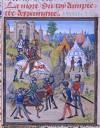
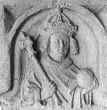
On Mar. 27, 1350 king (since 1312) Alfonso XI (b. 1311) dies of the plague while sieging Gibraltar, and his son Peter (Pedro) I (the Cruel) (1334-69) becomes king of Castile and Leon (until 1366), while his slightly older illegitimate half-brother Count Don Enrique (Henry) of Trastamara (Trastámara) (1334-79) begins plotting for the throne.
In late summer 1360 king (since 1350) Pedro I of Castile and Leon orders his highest dignitaries to kiss the hand of the corpse of his beloved Castilian Princess Ines de Castro, who is seated on a throne in the city of Coimbra, and to do obeisance to her as the queen of Portugal - some people call me the space cowboy, some call me the gangster of love? Also in 1360 wealthy Spanish Jewish financier-diplomat Samuel ben Meir Abulafia (1320-61) is arrested and robbed, then killed next year by Peter I the Cruel sans explanation - I'm too cruel to be kind?
In 1366 Bertrand du Guesclin "charmingly extorts" 200K francs from the pope to finance a Grand Co., a 30K-man brigand expedition to Spain to aid illegitimate son of Alfonso XI, Jew-killer Count Don Henry (Enrique) de Trastamara (Trastámara) (1334-79) in his claim for the throne of Castile and Leon against his Jew-killer half-brother king (since 1350) Peter I the Cruel, who is overthrown, and Henry Trastamara is crowned as king Henry II of Castile and Leon (until 1367). Early in the year Edward the Black Prince leaves Spain, Henry Trastamara returns, and fights the civil war; John of Gaunt, duke of Lancaster (patron of poet Geoffrey Chaucer) aids his ailing brother the Black Prince, although he lacks his military skill; on Mar. 13 Peter I the Cruel is defeated again by Henry Trastamara at the Battle of Campo de Montiel near Toledo; on Mar. 14 king (since 1350) Peter I the Cruel (b. 1334) (cruelly?) dies in a personal combat with Henry Trastamara, who again becomes Henry II of Castile and Leon, founding the Trastamara (Trastámara) Dynasty, which later incl. Ferdinand II and Isabella I of Christopher Columbus fame.

On May 29, 1379 king (since 1369) Henry II of Trastamara (b. 1334) dies, and his son Juan I of Castile (1358-90) becomes Trastamara king of Castile and Leon #2 (until 1390).

On Oct. 9, 1390 king (since May 29, 1379) Juan I of Castile (b. 1358) dies after a fall from a horse, and his son Henry III (the Sufferer) (the Mourner) (the Infirm) (1379-1406) becomes Trastamara king of Castile and Leon #3 (until Dec. 25, 1406), going on to trim the power of the aristocracy, repealing the alcabala sales tax, and ending their right to attend the royal council; after a crescendo of violence against the Jews next year, he passes laws protecting them.



On Dec. 25, 1406 king (since Oct. 9, 1390) Henry III the Sufferer (b. 1379) dies, and his infant son John (Juan) II (1405-54) becomes Trastamara king of Castile and Leon #4 (until July 20, 1454) under the regency of his mother Catherine of Lancaster (daughter of John of Gaunt) and his uncle Ferdinand I the Just of Aragon (1380-1416) after the latter declines the throne; his 48-year reign is the longest in the history of the Trastamara Dynasty; Castilian poet Inigo Lopez (Íñigo López) de Mendoza y de la Vega, Marquis of Santillana (1398-1450) goes on to thrive during John II's reign, adapting the humanism of Dante Alighieri (1265-1321), Petrarch (1304-74), and Giovanni Boccaccio (1313-75) to the stifling orthodox Roman Catholic atmosphere of Spain.

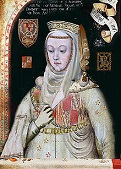
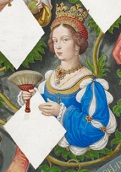
On July 20, 1454 king (since Dec. 25, 1406) John (Juan) II (b. 1405) dies after a 48-year reign, during which he spent most of his time in amusements while forcing Jews to wear distinctive clothing and keeping them out of the govt., but otherwise letting his kingdom slide, and is succeeded by his equally weak son Henry (Enrique) IV (the Impotent) (the Spendthrift) (1425-74) as Trastamara king of Castile of Leon #5 (until Dec. 11, 1474), who follows daddy's example and lets his kingdom continue its decline and decentralization; his 1st wife (since 1440) Blanca (Blanche) II of Navarre (1424-64), whom he divorced after 13 years of marriage in 1453 after having her examined to prove that she's still a virgin while he gets the hos of Segovia to testify that he's not impotent, and sends home (after which her family imprisons her, and she mysteriously dies in 1464) out of the way, he marries Portuguese infanta Juana (Joanna) of Portugal (1439-75) (son of King Duarte of Portugal and Eleanor of Aragon) next year.


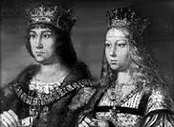


The final Roman Catholic V against the Muslims in Spain is owed to a king with a limp dick and/or dry nuts? On Dec. 11, 1474 Castile-Leon king (since July 22, 1454) Henry IV the Impotent (b. 1425) dies without a male heirs and his half-sister Isabella I the Catholic of Castile and Leon (1451-1504) and her hubby Ferdinand II the Catholic of Aragon (1452-1516) (royal cousins, married in 1469) jointly succeed him as Ferdinand V and Isabella I of Castile and Leon (until 1504), uniting all of Spain except Moorish Granada, but not without a little War of the Castilian Succession (ends 1479), with Afonso V of Portugal supporting the claim of Henry IV's only child, 12-y.-o. daughter (Isabel's and Afonso's niece) Juana (Joanna) la Beltraneja (1462-1530), going through with an extreme marriage with her next May 30 in Plasencia in Extremadura (W Spain); too bad, even though John IV made his nobles promise to support her as queen, not only was he a weak king, but he was known for shooting blanks, having divorced his 1st wife Blanca in 1453, leaving her a virgin after 13 years of marriage, and it is widely rumored that Juana is really the below-the-belt daughter of Beltran (Beltrán) de la Cueva y Alfonso de Mercadeo, 1st Duke of Albuquerque (1443-92) (hence her nickname La Beltraneja), which was reinforced when John's 2nd wife Juana had a love child with the nephew of Bishop Fonseca, causing him to divorce her - you're combat ineffective, do you understand me?
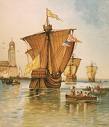








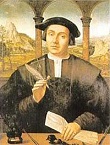
781 years, and it was more than worth it? On Jan. 2, 1492 the keys of Granada are surrendered to the forces of "Los Reyes Catolicos" (the Catholic Kings) Ferdinand II (1452-1516) and Isabella I (1451-1504) of Aragon and Castile by Boabdil (Muhammad XII) (1460-1533), who flees to Fez in N Africa, ending a 10-year effort by the Catholic kings, and becoming the final defeat of the Muslims in Spain, who invaded way back in 711, and were on the loser's team since the 1212 Battle of Las Navas de Tolosa, ending the Christian Reconquista (Sp. "reconquest") of Spain (begun 722); as Boabdil and his family leave the city, they pause at El Ultimo Suspiro del Moro (The Moor's Last Sigh) Bridge to look back at the glorious Alhambra ("red fortress"), and his mother tells him, "Weep like a woman for what you could not defend like a man"; meanwhile, wasting no time, after pulling strings with wealthy Marranos (closet Jews) Luis de Santangel(o), Gabriel Sanchez, and Juan Cabrero, auburn-haired (Marrano?) (front man for a Jewish conspiracy?) Christopher Columbus (1451-1506) meets with Ferdinand II and Isabella I in the Alhambra in Granada to beg for support for his proposed expedition to Cathay via the new improved westward ho route, promising to bring back gold and silver to finance an expedition to reclaim the Holy Land for Dear Christ, but they don't go for it, and he finally gives up and starts back for France to give their king the chance to become the next rich and admired Christian hero, but Isabella she-ain't-called-the-Catholic-for-nothing changes her mind at the last minute and sends messengers to stop him at the Bridge of Pinos, and they sign an agreement on Apr. 17, and the rest is, er, history - now America's ass is grass and whitey's got the lawnmower? Two, two, two expulsions in one, or, You must really try these strawberries and blueberries, we can take care of you wandering Jews? On Feb. 1 Spanish inquisitor-gen. Tomas de Torquemada (1420-98) gives Spanish Jews 3 mo. to accept Roman Catholic Christinsanity, er, Christinanity, er, Christianity or leave the country, and when they prove stiff-necked like always, on May 1 (Omer 19) Catholic Kings Ferdinand II and Isabella I order the Expulsion of the Spanish Jews, incl. all 250K non-converted Swine from Spain (50K families); after frantically trying to get something of value for their possessions (exchanging a house for an ass, a vineyard for a piece of cloth, etc.), and swallowing their gold and silver coins before going through custom posts, the last boatload leaves on Aug. 3; the ban on Jews is not lifted until 1968; Portuguese-born Jewish royal adviser Isaac Abravanel (1437-1508) is expelled; a massive number of Sephardic Jews migrate to N Africa, where they find themselves more educated, connected, and sophisticated than the Muslims, finding toleration and moving into govt. positions, which ends up stretching Muslim tolerance; many emigrate to the Ottoman Empire, where Sultan Beyazid II welcomes them into Constantinople, Izmir, Salonika, and other cities in Anatolia, the Balkans and Arab lands; others emigrate to England and Am. - no shortage of bankers, doctors, and lawyers now? How to lose 93 million friends in ten days, or, When he started out he didn't know where he was going, when he got there he didn't know where he was, and when he got back he didn't know where he'd been, until he looked between his legs? The biggest TV reality show without teleprompter or cue cards? On Aug. 3 (same day the Jews are expelled from Spain by Ferdinand II and Isabella I) after receiving 17K ducats from baptized Jewish finance minister Luis de Santangel (-1498) (who talked the monarchs into it), and allegedly receiving a vision from the Holy Spirit to bear Christ to the West Indies (or a vision from the Devil to carry his Catholic Church there?), writing "I could feel his hand upon me to sail to the Indies... There was no question that the inspiration was from the Holy Spirit", 41-y.-o. Christopher (Gr. "Christ-bearer") Columbus (Lat. "dove") (1451-1506) (who is really working for the Illuminati, since his real name is Cristobal, i.e. "anointed of Baal or Satan", plus Colombo (It.) = Colom (Catalan) = Colon (Sp.) = anus?, and Lat. "paloma" = dove = penis?), and who has never been farther E than the Aegean Sea begins his First Voyage for Asia by going W instead of E, setting sail from Paloma, er, Palos, Spain for the island of La Gomera in the Canary Islands to pick up wine and water, getting into a romance with gov. Beatriz de Bobadilla y Ossorio (1462-1501) and staying for 1 mo. (returning in 1493 and 1498, when she marries somebody else), who gives him sugar cane cuttings, after which he sails for the "West Indies" (West Asia), thinking that his voyage will lead him to Cathay (China), Cipango (Japan), the Spice Islands (the Moluccas), then India in three ships with a total crew of 88, incl. five Marranos (converted Jews), incl. interpreter Luis de Torres, surgeon Marco, physician Bernal, and sailors Alonzo de la Calle and Gabriel Sanchez (who later sells Columbus on the idea of capturing 500 Indians to sell as slaves in Seville, becoming the beginning of Am. slavery); the crew is really Catalonian?; the ships incl. the caravel Pinta (Sp. "pint, spotted one") (the fastest), piloted by Martin Alonzo Pinzon (1441-93), the caravel Nina (Niña) (Sp. "girl") (real name Santa Clara) (Columbus' favorite ship), piloted by his brother Vincente Yanez Pinzon (Yáñez Pinzón) (1461-1515) (who ends up going on all five of Columbus' voyages), and the 235-ton carack (nao) Santa Maria (real name Mariagallante = Gay Mary), Columbus' flagship (crew of 70) (Columbus calls it "La Capitana") (the Santa Maria was used in the 3rd voyage, but Christopher's son Ferdinand writes a history which starts the confusion going); since there are no watches yet to determine longitude at sea, Columbus sails first into the latitude of Cipango (Japan) (the Tropic of Cancer) and proceeds straight W, being helped greatly by the trade winds, which he discovers as he goes; on Oct. 10 the crew nearly mutinies, and makes Columbus promise to return home if land isn't sighted in two days (sounds like a fairy tale concocted later to make them seem to enjoy divine favor?); on Oct. 11 (10 p.m.) a UFO is sighted, consisting of "a light glimmering at a great distance", which disappears and reappears several times, moving up and down "in sudden and passing gleams" - let me guess, a welcome signal from ETs? The Ultimate Thank God It's Friday? On Oct. 12 (Oct. 22 Gregorian) (Fri.) (2:00 a.m.) (after 36 days and 2.6K mi.), Pinta's crow's nest sailor Rodrigo de Triana (Juan Rodrigo Bermejo) (1469-?) does guess what, you guessed it, sights land (and later gets so pissed-off at not being given a reward that he moves to Africa and converts to Islam?), and Christopher Columbus (1451-1506) and his crew anchor at San Salvador (Sp. "Holy Savior") (Watlings) Island (called Guanahani by the aborigines) in the Bahamas just N of the Tropic of Cancer, at 23.5 deg. N 75 deg. W (the log books say 24 deg. N 75.5 deg. W) (named after pious pirate Watling, who forbade pillaging on Sundays, the residents renaming it San Salvador in 1926 to claim it as the place of Columbus' first landfall after 434 years of controversy, but it is never conclusively decided, with Cat Island and Samana Cay proposed), and Columbus dresses in full admiral's regalia to take possession of the new land in the name of Ferdinand and Isabella; having never seen a ship, the natives don't see them until a shaman convinces them that they're real, after which they greet Columbus with warm hospitality, causing him to write "They willingly traded everything they owned... They do not bear arms... They would make fine servants... They could easily be made Christians... With fifty men we could subjugate them all and make them do whatever we want"; after the natives present them with tobacco leaves, which they discard, they sail SW through the Great Bahama Bank, landing on Cuba on Oct. 17, thinking it is the Chinese continent, searching in vain for the magnificent cities described by Marco Polo; on Oct. 20 Columbus writes "I shall set sail for another very large island which I believe to be Cipango, according to the indications I receive from the Indians on board", which proves to be Hispaniola, and he finally lands on Haiti on Dec. 5. On Nov. 3 after invading France to punish it for supporting Perkin Warbeck, Henry VII of England forces them to agree to the Peace (Treaty) of Etaples (Étaples) (official end of the Hundred Years' War), in which France expels Warbeck and pays England an indemnity of £159K. In Nov. a gift of tobacco leaves from the Arawaks (Aruacans) is kept this time after Santa Maria crewman Rodrigo de Jerez learns to smoke from the natives, and brings back the habit to his hometown of Ayamonte, causing his wife to denounce him as a man who "swallows fire, exhales smoke, and is surely possessed by the devil", after which he is imprisoned by the Spanish Inquisition for seven years, by which time the super-addictive habit of smoking has caught on. On Dec. 21 (St. Thomas' Day) Columbus discovers Port St. Thomas in Haiti, and on Dec. 22 he has his first meeting with Marien chief (cacique) Guacanagaric (Guacanagarix) (Guacanagari), who allows him to found the settlement of La Navidad; too bad, the settlers are killed by a rival tribe before Columbus returns on his 2nd voyage. On Dec. 24 (Dec. 15 Old Style) Columbus writes in his journal that he is very impressed by the aborigines, who are of "pleasing appearance with fine features and medium height with muscular bodies", adding, "A better race there cannot be, and both the people and the lands are in such quantity that I know not how to write it... All here have a loving manner and gentle speech". On Dec. 25 the Santa Maria sinks off Hispaniola (La Espanola) (Haiti); it was first shot with a cannonball by Columbus' flagship to disable it on Caracol Beach, and rechristened Ft. Natividad, housing the men Columbus left behind until the natives attacked and burned it?; he left the men behind to force Isabella into financing a 2nd voyage?; her overseers, the fleet's master at arms, comptroller, and secy. were left behind to avoid being contradicted when he told Isabella he had discovered India? - she had to leave to give birth to Santa Claus? On Dec. 26 Columbus writes in his journal that he had been hoping to find gold "in so great quantity that the Sovereigns within three years would undertake and prepare to go and conquer the Holy Places [Holy Land]"; chickens and rats are introduced to America; smallpox is also introduced to native Ams. as a get-unwell card by 1518; Jews are also introduced next year, with Portuguese Jews settling in St. Thomas Island, later becoming the first large plantation owners, running sugar factories with 3K African slaves; too bad, when the new discovery doesn't fulfill the original mission of furnishing a route to India and China, desperation sets in, causing the need to milk the New World for plunder and profit to take over, resulting in a mean cold systematic mass murder machine that goes on for cents. and reduces the native pop. to almost nil; Columbus hangs natives 13 at a time in honor of Christ and the 12 Apostles? Vasco da Gama (1460-1524) directs the defense of the Portuguese colonies from the French on the coast of Guinea.


On Jan. 23, 1516 Castilian king (since 1474) Ferdinand II of Aragon (Ferdinand V of Castile and Leon) (b. 1452) dies, and his 16-.y.-o. grandson Charles of Burgundy (future HRE Charles V) is crowned Charles (Carlos) I of Spain (1500-58) (until Aug. 27, 1556), founding the Spanish Hapsburg (Habsburg) Dynasty (ends 1700); his mother Joanna (Juana) the Mad (1479-1555) becomes nominal joint ruler of Castile, even though she spends the rest of her life in the castle of Tordesillas doing who knows what with her hubby's remains; Charles I grants licenses to the Flemings to transport African blacks to the Am. colonies - the original Psycho?

In Jan. 1556 after his brother Ferdinand I's work at Augsburg restores good relations, which had grown icy after he designated the imperial crown for his Valladolid-born Hapsburg son Philip II (the Prudent) (1527-98) instead of him on Jan. 16, gout-suffering HRE Charles V (Charles I of Spain) gets religion and officially abdicates at Brussels, designating Ferdinand I as king of Germany (reserving his title of HRE until 1558) and Philip II as "Most Catholic King" of Spain (until Sept. 13, 1598), although his "advice" remains a command; the war with France continues; Charles V retires to a luxurious life in the monastery of Yuste N of the Tagus Valley as a private individual not a monk, with 150 attendants (who are forever busy digging up fishy delicacies for his table), giving official control of the Hapsburg lands to Ferdinand I, while Philip II gets Spain, its overseas colonies, the Spanish islands in the Mediterranean (incl. Sicily), the Italian possessions (incl. Naples, Milan), Franche-Comte, and the Netherlands, causing speculation that there will be a winner-take-all war later; daddy "advises" Philip II to be "cutting out the root of heresy with rigor and rude chastisement", causing him to order the duke of Alva to give up his attacks on the Papal States in the Italian campaign so he can go toast some Dutch butt; Philip II speaks only Spanish but now rules the Netherlands along with his 2nd wife Bloody Mary Tudor of England, and reenacts Charles V's Edict of 1550, beginning "the longest, the darkest, the bloodiest, the most important episode in the history of the religious reformation in Europe"; he appoints inquisitor-gens. who send out a dozen inquisition officers throughout the Netherlands (Peter Titelmann et al.) to arrest people and burn them at the stake for offenses incl. reading the Bible, joking as they writhe in the flames; meanwhile during his reign Spain enters its Golden Age, reaching the height of its grate wealth and powah, becoming known as "the empire on which the Sun never sets" - yes I've seen it before, just little bits of history repeating?

In Mar. 1558 HRE Charles V (b. 1500) formally abdicates at the Monastery of Yuste in Spain, then dies on Sept. 21; he recognizes his illegitimate son Don Juan of Austria (b. 1547) in his will, and entrusts him to the care of Philip II, who grants him the rank of a prince of the House of Austria with a residence in Madrid next year; on Mar. 14 handsome goateed Ferdinand I (1503-64) is crowned HRE in Frankfurt (until 1564), working to effect a Catholic-Protestant reunion, which ultimately flops because of his insistence that bishops retain their secular authority.



It's getting to be a habit with me? Another big V for Protestantism? The future of the English is so bright they need to wear shades? In Feb. 1588 the Marquis of Santa Cruz dies, and is replaced by Don Alonso de Guzman el Bueno, Duke of Medina-Sidonia (1550-1610) as cmdr. of the Invincible Spanish Armada (130 galleon ships carrying 19K-27K men), whose plan is to land in Sandwich-Deal and support an invasion of England through Kent by the Duke of Parma's professional soldiers coming from Flanders (reinforced through the Spanish Road from N Italy), capturing it for the Roman Catholic faith, with exiled English Cardinal William Allen (1522-94) waiting in the wings; it sets sail from Lisbon on May 30, the very day that peace commissioners sent by both sides meet in Parma; after stopping at Corunna for supplies, it sets sail again, then is scattered by a storm from the Bay of Biscay; in early July it leaves La Coruna; on July 19 it is sighted off the Lizard Peninsula by the 197-ship English navy (34 royal warships, 163 armed merchant vessels); on July 21 there is a skirmish off Eddystone, Plymouth, and another on July 23 off Portland, Dorset; on July 27 the Armada anchors off Gravelines between France and Spanish Netherlands to await for communications from Parma's army, the stench from its filthy galleys rowed by slaves chained to their benches carrying for miles on the wind; on July 28-29 (Aug. 7-8 New Style) (Sun.-Mon.) English "hell-burners" (fire ships) are sent into the 130-ship (22 galleon and 108 armed merchant vessels) Spanish Armada (known for its powerful crescent formation) at the Battle of Gravelines, causing it to break ranks, after which it is defeated by the English guns at close quarters, losing five ships, with the rest badly damaged, and 600 killed, 800 wounded, and 397 POWs taken; it then makes for Scotland without Parma's army, where it is broken up by a great "Protestant wind" off the coast on July 30, then forced onto the N and W Irish coasts, where 24+ ships are wrecked; the Spanish warship La Girona fires a broadside at the Chimney Tops in the Giant's Causeway on the N coast of Ireland (60 mi. NW of Belfast) after believing them to be an enemy fortress; on Aug. 9 (Aug. 19 New Style) glammed and glowing Elizabeth I rides down to Ft. Tilbury in Essex to cheer up the troops and see the Armada, and rides out with a 6-man bodyguard, giving her big Tilbury Speech while mounted on a grey gelding and dressed in white with a silver cuirass (metal breastplate), with the immortal soundbyte "I have the body but of a weak and feeble woman, but I have the heart and stomach of a king"; after waiting two more days for a possible invasion by Parma's army from Dunkirk, the English troops disperse and party hearty; meanwhile the remaining 53 intact Spanish ships, having lost two-thirds of their men (15K-20K of the 11K sailors and 19K soldiers) straggle back to Spain by Oct. 14; the English lose eight ships, 50-100 killed, and 400 wounded, although 6K-8K later die of disease; Drake's co-admirals Martin Frobisher and John Hawkins are knighted for their role in the big British V; Elizabeth I hands out medals with the inscription "God breathed and they were scattered"; 10K English troops were equipped with firearms as an experiment, while the Spanish relied on archers, and the English success convinces military experts to give up on archery; the Armada Portrait of Elizabeth I, by an unknown artist shows her resting her hand on a globe over America; British sea supremacy begins, along with increasing nationalism in England, helping secure Protestantism as England's state religion, and being white and not olive-skinned or some other shade of red, brown or black as the metareligion; Spain's officer class is wiped out, the Duke of Medina-Sidonia never recovers from the humiliation, the Duke of Parma's rep. remains under a cloud, but the Spanish keep hoping for a miracle from God to defeat the infidels, sending four more armadas until 1601; the Dutch are greatly helped in their battle for independence from the Spanish, going on to clear them from the territories of the Seven United Provinces by the end of the cent.


On Sept. 13, 1598 to the great relief of the English and the Huguenots, after 50 days of intense pain Spanish king (since Jan. 16, 1556) Philip II (b. 1527) dies, covered with stinking, putrefying sores and with a lead coffin placed by his orders at his bedside, and his 20-y.-o. son Philip III (1578-1621) becomes king of Spain, plus (as Philip II) king of Portugal, Naples, Sicily, and the Netherlands (until Mar. 31, 1621); a weak pious whimp, he entrusts the conduct of public affairs to Francisco Gomez (Gómez) de Sandoval y Rojas, 1st Duke of Lerma (1553-1625) while he has fun with religious observances and court festivities and stays away from realities; meanwhile his ministers try to get Spain out of the European wars while it licks its stinking, putrefying wounds; the glory of Spain is never again what it once was, but the Spanish do a good job of hiding it for some time because it's only been a cent. since Columbus?


On Mar. 31, 1621 Spanish king (since Sept 13, 1598) Philip III (b. 1578) dies in Madrid, and his son Philip (Felipe) IV (1605-65) succeeds him as king of Spain, Naples, Sicily and Netherlands (until Sept. 17, 1665), becoming as weak a king as his daddy, soon appointing Gaspar de Guzman y Pimentel, Count of Olivares and Duke of Sanlucar (1587-1645) as Spain's first PM, relinquishing rule to him; Olivar goes on to reform the court and reverse the no-war policy of Spain, which is too late to stop Spain's decline; meanwhile carefree Philip becomes a patron of the arts, backing painter Diego Velazquez (1599-1660), dramatist Lope de Vega (1562-1635), poet Pedro Calderon de la Barca (1600-81) et al. in a desperate attempt to keep up with the heretic English?

On Sept. 17, 1665 Spanish king (since Mar. 31, 1621) Philip IV (b. 1605) dies, leaving the Spanish Empire at its zenith at 3B acres, and his Hapsburg-inbred 4-y.-o. son Charles (Carlos) II (the Bewitched) (1661-1700) becomes king of Spain, Naples, and Sicily (until Nov. 1, 1700), with his mother Mariana of Austria as regent, growing up to become mentally-retarded and sterile, becoming the last of the Spanish Hapsburgs.
On Mar. 25, 1700 (Mar. 13 Old Style) the Treaty of London (Second Treaty of Partition) (first in 1698) revamps the Spanish succession, giving Spain and the Indies to Archduke Charles (later HRE Charles VI) (2nd son of HRE Leopold I), Naples, Sicily, and the Duchy of Lorraine to the French dauphin, and Milan to the duke of Lorraine, with the two branches of the House of Hapsburg stipulated to forever remain separate; Charles II of Spain signs a new will making Louis XIV's grandson Philip V, duke of Anjou his heir.

On Sept. 27, 1700 Pope (since July 12, 1691) Innocent XII (b. 1615) dies after advising retarded king Charles II of Spain to make his grandnephew (Louis XIV's blonde 2nd-eldest grandson) (great-grandson of Philip IV of Spain) Philip (Felipe) V, Duke of Anjou (1683-1746) his testamentary successor, and on Nov. 1 Charles II (b. 1661) dies childless, ending the line of the Spanish Hapsburgs, and Louis XIV of France accepts the Spanish throne for Philip V, founding the Spanish House of Bourbon, but the Austrians want Spain to remain Hapsburg to keep Louis XIV from getting too much power, and back Hapsburg Archduke Charles (later HRE Charles VI), which leads on May 15, 1702 to the 12-year War of the Spanish Succession (ends Sept. 7, 1714).
You get this, I get that, now who wants lemonade? On Apr. 13, 1713 the Treaty (Peace) of Utrecht, signed by France on the one hand and England, Holland, Prussia, Savoy and Portugal on the other, followed by more treaties signed on July 13 between Spain and England, and more on Aug. 13 between Spain and Savoy (and more in 1714 and 1715), all concluded by Viscount Bolingbroke against the wishes of nearly the entire English nation ends Louis XIV's wars, Queen Anne's War (Second War of the Grand Alliance) (begun 1701), and the War of the Spanish Succession (begun 1700), with the uniting of France and Spain under one king permanently forbidden, and the whole idea being to check France's ambitions by pumping up Ahnuld, er, Austria and Holland on its N, Prussia on its E, and Savoy on its SE, launching the inevitable process of unification of Germany and Italy in the 19th cent., while freeing England for fast commercial expansion; it recognizes the Protestant succession in England, the title of Philip V as king of Spain and the Spanish colonies, and cedes from Spain the Spanish Netherlands (that part which had belonged to the Hapsburgs), and cedes Minorca and Gibraltar to England, along with Hudson Bay, Nova Scotia (Acadia), Newfoundland, and St. Christopher (Kitts) and Nevis, allowing France to retain Quebec; Port Royal is renamed Annapolis Royal in honor of Queen Anne, and remains capital of Nova Scotia until 1750; Prussia receives recognition of the royal title and possession of Neuchatel and the upper quarter of Gueldres, while its claim to the principality of Orange on the Rhone River (which gives its name to the Dutch royal line) is ceded to France; Portugal receives expanded boundaries in South Am.; Sicily is separated from Naples and given to Savoy (until 1720), along with territory in upper Italy in return for renouncing its claims on Spain, reserving the right of inheritance in case the House of Bourbon should become extinct; Count Wirich Philipp von Daun becomes the first Austrian viceroy of Naples; the Iroquois are recognized as British subjects; Britain obtains the asiento (monopoly of slave trade) with Spanish possessions for 30 years; France gains the college town of Douai; England emerges ascendant on the sea over France and the Netherlands, and Euro politics becomes all about Anglo-French and Austrian-Prussian rivalry, with Russia, Spain, Holland, Sweden, and the smaller German states playing both sides.

On July 9, 1746 Spanish king (since Nov. 1, 1700) Philip V (b. 1683) dies, leaving Spain stripped of its European possessions incl. Gibraltar and Minorca, and is succeeded by his 4th son (by Mari Luisa of Savoy) Ferdinand VI (the Learned) (1713-59), who becomes Spanish Bourbon king #3 (until Aug. 10, 1759), going on to patronize castrato Farinelli, end the influence of widow (of Philip V) Queen Elisabeth Farnese of Parma and her Italian courtiers, who retires fro the court, and pursue a policy of neutrality between France and Britain without renouncing its claim to Gibraltar; he builds up the royals-and-nobles-only city of Aranjuez 26 mi. S of Madrid on the site of the ancient town of Ara Jovis (Lat. "altar of Jove") and a royal summer palace built by HRE Philip II (1527-98), allowing non-royals to stay overnight in 1752; his treasury secy. the Marquis of Ensenada modernizes Spain, creating the Giro Real bank in 1752, registering ships to trade freely in the Americas, modernizing the navy, founding the Royal Academy of the Fine Arts of San Fernando in 1752, which patronizes composer Domenico Scarlatti, and improving relations with the Church.



On Aug. 10, 1759 Spanish king (since 1746) Ferdinand VI (b. 1713) dies, and his Francophile half-brother Charles III (1716-88) becomes Bourbon king #3 of Spain (until Dec. 14, 1788), finally bringing some enlightenment to Spain, incl. French art and lit., although it doesn't penetrate too far into the people; on Oct. 6 he hands the Kingdom of the Two Sicilies (Naples and Sicily) over to his 8-y.-o. 3rd son Ferdinand IV (1751-1825) via a Pragmatic Sanction under the titles Ferdinand IV of Naples and Ferdinand III of Sicily, with Bernardo Tanucci (1698-1793) as regent, who bernards to institute tanucci liberal reforms and consider a military alliance with France - a chicken sandwich is a chicken sandwich is a chicken sandwich?

On Dec. 14, 1788 Spanish king (since 1759) Charles III (b. 1716) dies, and his 2nd son Charles IV (1748-1819) becomes Bourbon king #4 of Spain (until Mar. 19, 1808).



In early Mar. 1808 France invades Spain with 100K troops under the pretext of guarding its coasts against the British, and takes Barcelona and Madrid, causing a palace rev. in Aranjez and forcing the dismissal of chief minister Manuel de Godoy (1767-1851) and on Mar. 19 Spanish Bourbon king #4 (since 1788) Charles IV (1748-1819) abdicates in Aranjuez in favor of his son Prince Ferdinand, who is proclaimed Ferdinand VII "the Desired" "the Felon King" (1784-1833), Bourbon king of Spain #5, who turns to Napoleon for support and abdicates on May 6, and is kept under guard in Chateau de Valencay (owned by Talleyrand) by Napoleon (until 1813), while Napoleon's brother Joseph Bonaparte (1768-18445) is made king Jose I of Spain (until Dec. 11, 1813), sparking uprisings and leading to the Peninsular War; Godoy is captured by a mob, rescued by the French, and lives the rest of his life in exile in Paris.

On Apr. 14, 1808 the Battle of Bayonne is a D for new Spanish king Joseph Bonaparte, elder brother of Napoleon, who is transferred from Naples to be crowned on June 6, while Napoleon's fashionplate brother-in-law Joachim Murat (1767-1815) becomes king of Naples (until 1815); Ferdinand VIII is imprisoned in France; on Sept. 25 an opposition govt. is formed in Cadiz, which recognizes Ferdinand VIII as true king; in Dec. Napoleon abolishes the Inquisition in Spain and Italy by decree, after which it keeps popping up again until 1834; the Spanish revolt and the British come to their aid, joining the Peninsular War.

On Dec. 11, 1813 former king (1808) Ferdinand VII (1784-1833) is restored to the throne of Spain (until Sept. 29, 1833), and proves to be a reactionary absolutist, backed by the Persians (conservative deputies), soon double-crossing the liberals and abolishing the liberal constitution on May 4, then arresting the liberal leaders on May 10, all of which increases underground radicalism, incl. Masons; Joseph Bonaparte refuses to abdicate even after his little brother Napoleon I recognizes Ferdinand VII, but finally gives up; Ferdinand VII proves "in many ways the basest king in Spanish history" (Stanley Payne).

On Sept. 15, 1821 the Confederation of United Provinces of Central Am. (Federal Repub. of Central Am.) (not the United States of Central Am.) is formed by Honduras, Guatemala, El Salvador, Nicaragua, and Costa Rica as an act of defiance against the Spanish Empire (until 1841), with El Salvador-born Gen. Manuel Jose (José) Arce y Fagoaga (1783-1847) as pres. #1 (until 1827); too bad, he becomes a dictator - yes, we have no bananas?



On June 30, 1833 Spanish king (since Mar. 19, 1808) Ferdinand VII (b. 1784) abrogates the (Hillary-ous?) males-only Salic Law in favor of his infant daughter Isabella (the infanta or crown princess), then dies on Sept. 29, after which Isabella II (1830-1904) is proclaimed queen of Spades, er, Spain (until 1868), with her mother Maria Christina as regent; too bad, the Carlist Wars in Spain begin when the liberals back Isabella II while the reactionaries back Ferdinand VII's brother Don Carlos Maria (1788-1855), who at first can't actively participate since he's involved in the Portuguese civil war until next year.







She's got a ticket to ride, but she don't care? On June 22, 1868 (a.m.) the Mutiny of San Gil in Spain sees artillery sgts. led by Capt. Baltasar Hidalgo shoot their officers, causing Gen. Leopoldo O'Donnell y Jorris, 1st Duke of Tetuan, 1st Count of Lucena (1809-67) to order the execution of 60 sgts., leading on Sept. 19 to the Glorious (Liberal) Rev. of 1868 (ends Sept. 28), led by adm. Juan Bautista Topete y Carballo (1821-85), marshal Francisco Serrano y Dominguez, Count of San Antonio (1810-85), and Gen. Juan Prim y Prats (1814-70); on Sept. 28 the royalists under Gen. Manuel Pavia are defeated by the rebels under Gen. Serrano at the Second Battle of Alcolea (first in 1808); on Sept. 30 Isabella II (1830-1904), who succeeded her father Ferdinand VII in 1833 is forced to leave Spain for France and is declared deposed, and in 1870 she abdicates in favor of her son Alfonso XII (1857-85) - who's alone at the end of the evening?


On Nov. 16, 1870 after the Spanish Cortes elects him, Amadeo of Savoy, 2nd son of Victor Emmanuel II of Italy is proclaimed king Amadeo (Amedeo) I (1845-90) of Spain (until Feb. 11, 1873); meanwhile pretender Don Carlos Maria de los Dolores, Duke of Madrid (1848-1909) asserts his claims as Don Carlos VII, while his Carlists wait in the wings.
On Apr. 21, 1872 the Third Carlist War (ends Feb. 27, 1876) begins when the Carlists begin revolting against the govt. of Amadeo I and his Liberal supporters; the Hidalgo Affair begins when gen. J. Hidalgo, who ordered the sgts. to fire on the officers at San Gil 1868 is made capt.-gen. of the Basque Province, and his artillery officers all go on a sick strike, causing Amadeo I to sign decrees firing them and promoting sgts. in their places, leading to his abdication next Feb.

On Feb. 10, 1873 after the Hidalgo Affair causes a radical rev., king (since Nov. 16, 1870) Amadeo I abdicates, and on Feb. 11 the First Spanish Repub. (ends Dec. 29, 1874) is proclaimed by a radical majority in the Cortes, who elect Estanislao Figueras i de Moragas (1819-82) as pres. #1 (until June 11), and on May 10 a new constituent Cortes is elected to write a federal constitution; the Carlists capture several provinces, and Don Carlos attempts an invasion, but fails and cries no harm no foul, still waiting in the wings; meanwhile the repub. goes through five presidentes in 23 mo., and after they attempt to create a 1-party repub. the radicals are kicked out of the Cortes by the repubs.



On Jan. 3, 1874 after a year of anarchy, Madrid Capt.-gen. Manuel Pavia y Rodriguez (Pavía y Rodríguez) de Alburquerque (1828-95) stages a coup in Spain and calls on all parties except the federalists and Carlists to form a new nat. govt., causing Emilio Castelar y Ripoll (1832-99), pres. #4 of the new First Spanish Repub. (since last Sept. 7) to be replaced by marshal Francisco Serrano y Dominguez, Duke de la Torre, Count of San Antonio (1810-85) (who had been conspiring to overthrow the repub. until then) becomes pres. #5 (last) of the 1st Spanish Repub. (until Dec. 29), working to gain Euro and U.S. recognition but proving unable to save Spain from a restoration of the Bourbon monarchy. On Nov. 28 ex-Queen Isabella II's I-can't-wait-forever time-won't-let-me 18-y.-o. son Alfonso XII (1857-85) declares himself of age, and comes out in support of a constitutional monarchy, gaining support from moderates and liberal unionists; on Dec. 29 a group of Spanish gens. rallies to him, ending the First Spanish Repub. of 1873, and he is crowned king of Spain (until Nov. 25, 1885); ousted pres. Marshal Francisco Serrano plays footsie with Alfonso XII and dies in Madrid on Nov. 26, 1885, 24 hours after him.


On Nov. 25, 1885 Spanish king (since Dec. 29, 1874) Alfonso XII (b. 1857) dies, and his wife Queen Maria Christina Henriette Desideria Felicitas Raineria of Austria (1858-1929) becomes regent (until 1902) for his posth. son (born next May 17) Alfonso XIII (the African) (1886-1941), not taking an active part; before he dies the Catalan Memorial (Memorial de Greuges) is sent to Alfonso XII by the Catalan Center, begging for a separate you know what; too bad he doesn't last the year? On May 17, 1902 16-y.-o. Alfonxo XIII (b. 1886) assumes rule (until Apr. 14, 1931)


Spain becomes a happy family for awhile?
On Feb. 8, 1931 Spanish king (since 1886/1902) Alfonso XIII announces a restoration of the constitution, and sets elections
for Mar.; on Feb. 14 Gen. Damaso Berenguer resigns; on Apr. 12 municipal elections result in an overwhelming V for the Repubs.;
Repub. leader Niceto Alcala (Alcalá) Zamora y Torres (1877-1949)
calls for the king's abdication; on Apr. 14 Alfonso XIII leaves Spain without abdicating, saying he wants to wait for the expression
of popular sentiment; on Apr. 14 the Second Spanish Repub.
is proclaimed in Eibar, Barcelona, and San Sebastien with Zamora as provisional pres.-PM; on June 28 elections give the Repub.-Socialist
coalition a huge majority in the new unicameral Cortes; on Nov. 12 the assembly declares the king guilty of high treason and forbids his return
to Spain, confiscating his royal property; in Oct. Zamora resigns in protest against extreme anticlerical legislation; on Dec. 9 the
1931 Spanish Constitution
is adopted, completely separating church and state and nationalizing church property (confiscating $500M worth by next year), as well as
giving the govt. power to nationalize public utilities, socialize estates, and expropriate private property; Zamora is elected pres. #1 (until 1936), and
Manuel Azana (Azaña) Diaz (1880-1940) becomes PM #1 (until 1933);
too bad that frecd de spending causes deflation and economic depression?
Spain turns into a chessboard with Hitler and Stalin making the moves, and Mussolini and Franco acting as pieces, while anti-fascists from all
over the world try to get in the game?
On Jan. 6, 1936 the Spanish Cortes is dissolved, and elections are scheduled for Feb.; meanwhile in Jan. Germany signs contracts to buy the output
of Spanish mines for use in their military machine, and after the new Spanish govt. cancels them in Feb., pissed-off Hitler begins plotting with Gens. Jose Sanjurjo and
Francisco Paulino Hermenegildo Teodulo (Teódulo) Franco y Bahamonde, Salgado y Pardo de Andrade (1892-1975)
to overthrow them, meeting with them in Berlin in Mar., after which in Dec. Germany receives its first iron ore shipments from Spanish Morocco,
followed by 1M tons of iron, tin, antimony, copper and ignite by the end of 1939, giving him the resources to take over Europe; meanwhile
Britain refuses to help France fight Spain because of their longtime rivalry.
On July 17/18, 1936 (Fri./Sat.) the Spanish Civil War
(ends 1939), a rightist revolt against the leftist Popular Front govt. begins with the revolt of the Morocco garrison under gens. Emilio Mola and Francisco
Franco, spreading to army towns in Spain, incl. Cadiz, Seville, Saragossa, and Burgos, and gaining the support of the bulk of the Spanish army; Madrid
is initially held by the loyalists under Gen. Jose Miaja Menant (1878-1958) (until 1937),
and Barcelona under ?; on July 23 the Junta de Defensa Nacional
sets up in Burgos as the seat of Franco's nationalist govt. until the capture of Madrid in 1939; Franco's hometown of
El Ferrol
in Galicia, NW Spain is captured by his forces soon after the war begins for a moral V; on July 20 Gen. Jose Sanjurjo (b. 1872), the leader of the rightist
revolt is killed in a plane crash in Estoril, Portugal when he overloads the plane with baggage, uttering the immortal soundbyte "I need to wear proper
clothes as the new caudillo of Spain"; lucky Francisco Franco becomes the new leader of the rightists, quelling rumors that he you know what to get
his promotion; the war splits Europe into fascist and anti-fascist camps, with Hitler and Mussolini aiding Franco, and Stalin aiding the loyalists, who
hastily organize a militia composed of workers from labor groups; the war causes Chilean poet
Pablo Neruda (1904-73)
to turn to Communism, while the loyalists put out a call to the Communist Internat. for volunteers, recruiting from many countries, incl. the U.S.;
Mussolini sends 50K-75K volunteers to Spain along with armaments, forcing him to devalue the lira on Oct. 5 and raise taxes.
On July 28, 1936 the repub. loyalist govt. of Spain confiscates all Roman Catholic Church property, pissing-off Pope Pius XI and causing him to recognize
Franco's Fascist govt. on Aug. 27, 1937.
Here comes the Sun, or, You're the one that I want, ooh-hoo-hoo?
On Mar. 28, 1939 after Nationalist Gen. Emilio Mola y Vidal (1887-1937)
announces that Franco's forces are advancing on Madrid in four columns, and that a "fifth column" of sympathizers is waiting in the city
(causing the phrase to catch on), loyalist-held Madrid and Valencia surrender, and the Spanish Civil War (begun 1936) ends after nearly 1M deaths, incl.
700K lost in battle, 30K executed or assassinated, and 15K killed in air raids; "Caudillo" (Spanish for Fuehrer) Franco becomes "supreme chief,
responsible only before God and history", ruling with an iron hand, ending civil rights and eliminating all opposition while giving the
Church and landed aristocrats all they want; on Apr. 1 the U.S. recognizes Gen. Franco's govt.; Pope Pius XII congratulates and blesses
Franco's Holy V; Franco's govt. sets up special tribunals that convict hundreds of loyalist leaders, thumbing their noses at Britain and France?
In July 1942 Gen. Franco reestablishes the 1876 Spanish Cortes
(abolished by Franco during the Civil War) as the supreme organ of the state, composed of 438 members (Procuradores) in 10 groupings,
most of whom are appointed to office: the nat. council (103 members), the reps of the authoritarian nat. syndicates (142 members), reps of
the provincial capitals and muncipalities (102 members), 13 cabinet ministers, 12 univ. heads, 6 reps of various professions, and 50
appointees of the chief of state (him).
On Nov. 20, 1975 after 36 years of absolutist rule (1939-75), Spain's Genalissimo Francisco Franco (b. 1892) dies,
and on Nov. 22 Prince Juan Carlos Alfonso Victor Maria de Borbon, grandson of king Alfonso XIII
(acting head of state since Oct. 30) becomes Juan Carlos I (1938-)
of Spain (until June 19, 2014), its first king in 44 years, the crowds chanting "Viva el rey";
by the new constitution the kingship becomes hereditary again.
On June 19, 2014 76-y.-o. king (since Nov. 22, 1975) Juan Carlos of Spain (b. 1938) abdicates in favor of his 46-y.-o. son
Crown Prince Felipe of Asturias, who on June 19 becomes Felipe VI (1968-),
king of Spain (until ?).



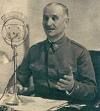







© Copyright by T.L. Winslow. All Rights Reserved.